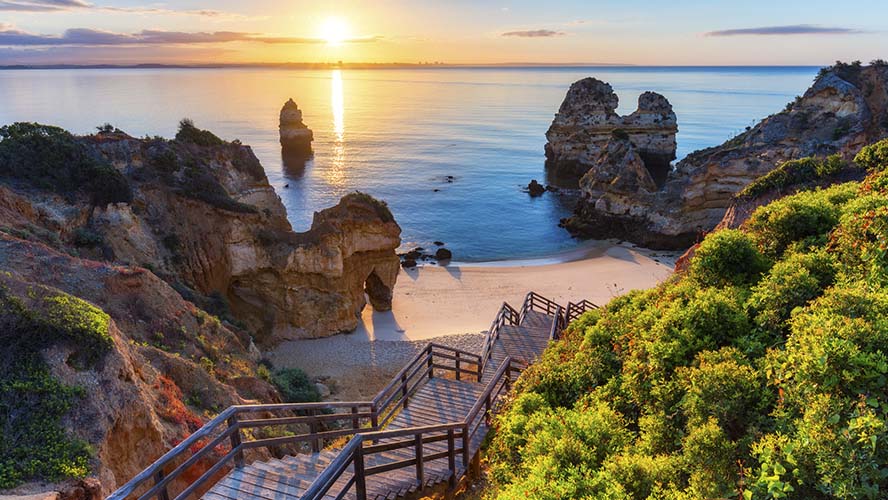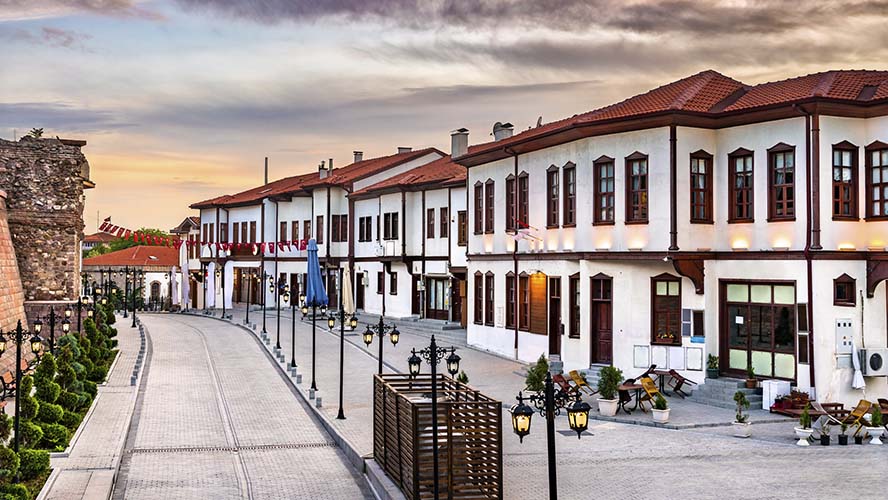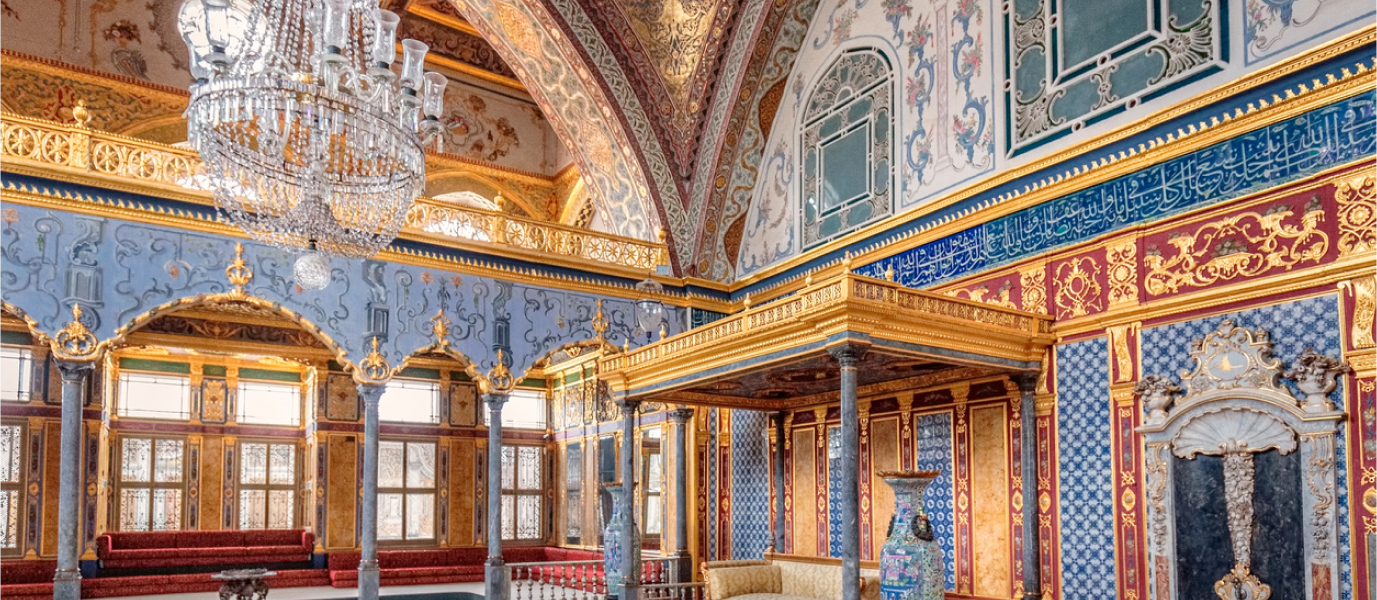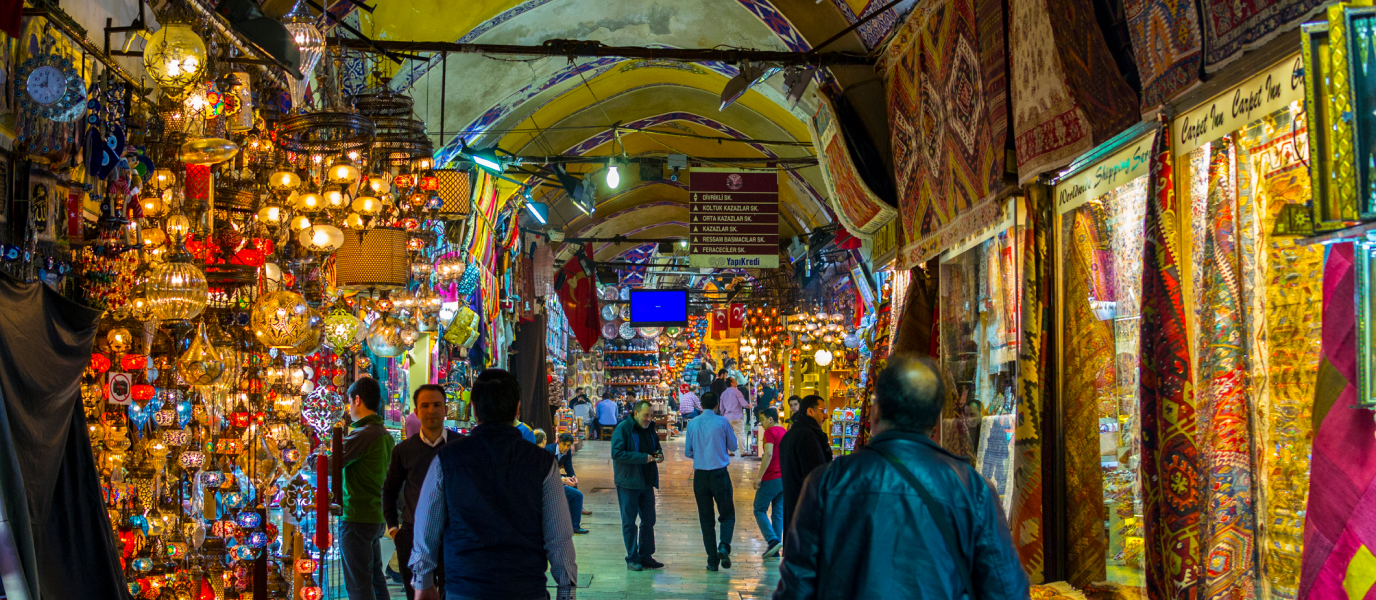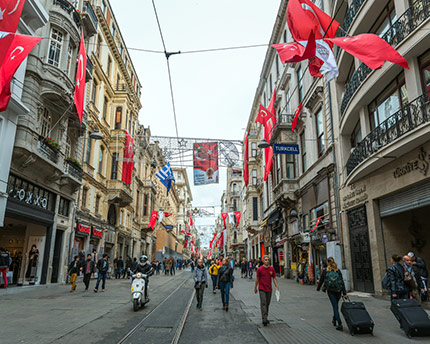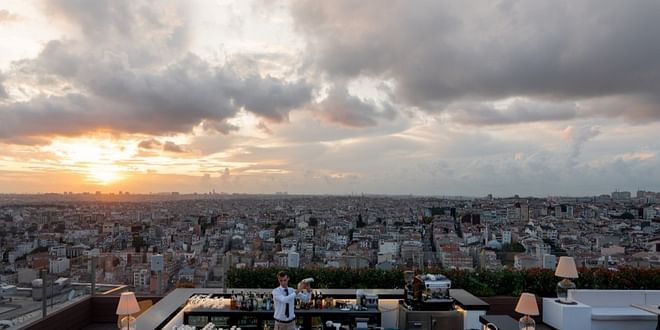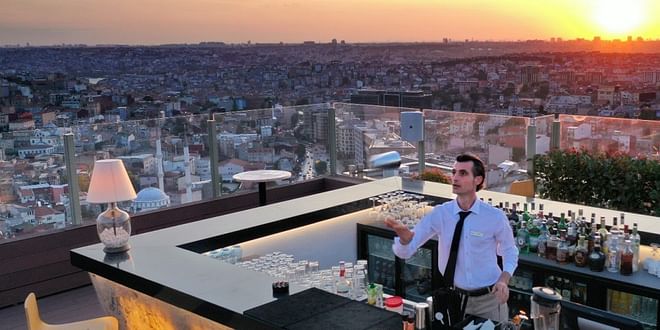For almost four centuries (1465-1853) Topkapi Palace was the political nerve centre of the Ottoman Empire, directing its armies and institutions from the historic peninsula of Istanbul. If you are planning a trip to the Turkish capital today, then this magnificent building is a must!
Topkapi Palace reflects the tastes and ambitions of the many sultans who inhabited it over the centuries. A succession of styles and opulence followed each sultan, hoping to out-do his forebears with each new addition to the building complex. 22 monarchs ruled from this palace until, in 1853, the sultan Abdülmecid decided to transfer his seat of power to Dolmabahçe Palace (link: Dolmabahçe Palace).
The history of Topkapi Palace
The history of the palace begins in 1459, when sultan Mehmed II ordered its construction. This came about six years after the Fall of Constantinople, which marked the end of the Byzantine or ‘East Roman Empire’, when the invading Ottomans wanted to give their new capital a palace worthy of their conquests. The sultan chose Sarayburnu Hill as the site for its construction, ideally situated amidst the Golden Horn (link: the golden horn), the Bosphorus and the Marmara Sea.
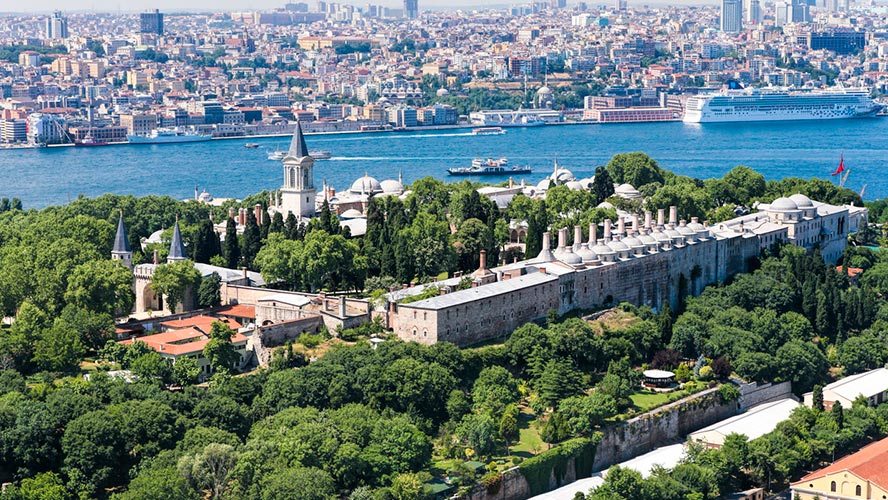
The palace was originally designed to act as both the sultan’s residence and administrative centre of the Ottoman Empire, a vast territory that stretched from the western Mediterranean (Algeria, today) to the Persian Gulf, and from Budapest to Yemen.
An earthquake in 1509 and a fire in 1665 destroyed parts of the palace but these were restored to their former glory eventually. Aside from the renovations after the fire, the palace’s appearance has not changed since the end of the 16th century.
What to see in Topkapi Palace
The size of the palace is extraordinary. Occupying more than 700,000 square metres with five kilometres of walls, it had a capacity for up to 4,000 residents.
As well as its four grand courtyards, the palace also has several large salons, such as that of the ‘Treasury’ which houses the famous 88-carat diamond that once belonged to Napoleon Bonaparte’s mother. There is also a room containing arms, one for relics and another with an exquisite collection of watches and clocks.
There are also gardens with spectacular views of the Bosphorus, and which also contain main famous kiosks, such as that of Baghdad, Yerevan and the Mustafa Pasha.
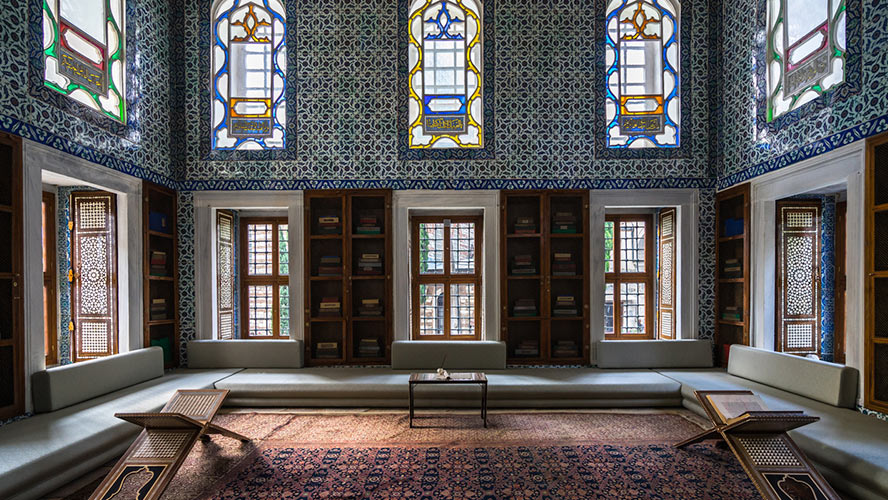
The Imperial Gate
The imperial gate is the main entrance to the palace. It belongs to the original construction of Mehmet II in 1478, whose ‘tughra’ or calligraphic monogram can still be seen on the uppermost part. Stepping through this gate, you will come to the first of the great courtyards and, once inside, the solemn silence demanded by the sultans still hangs heavily on the air.
The Imperial Hall
The Imperial Hall is the original throne room, which has a magnificently detailed 16th vaulted ceiling. This hall was were the sultan received guests and put on some entertainment for them at times. It has various doors leading off into other rooms and in the centre, next to the throne, a portico of blue columns divides the space. The details found on every wall and column of this hall are worth lingering over to get a sense of the power and opulence it once housed.
The Harem
The Harem, or ‘prohibited area’ in Arabic, was the space in the palace reserved for women. More than 400 rooms housed the sultan’s entourage, which included the Queen Mother – the person in charge of the Harem – as well as other family members, servants, consorts, princes and other people and objects close to the monarch. Hundreds of women lived in these rooms but very few men were permitted to enter.
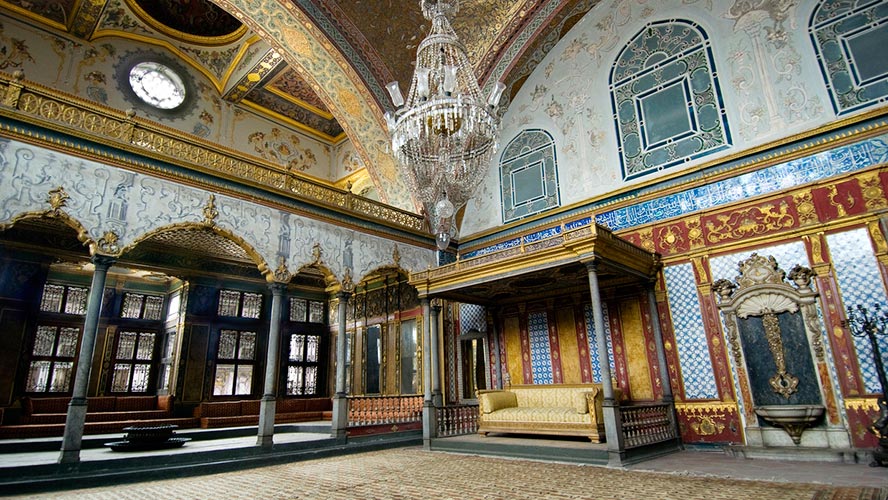
The Courtyard of the Black Eunuchs
The so-called ‘Black Eunuchs’ held the prestigious role as custodians of the harem in the palace. These eunuchs were predominantly African, while the ‘White Eunuchs’ were usually Christians from the Caucasus and the Balkans. It was the task of the Black Eunuchs to protect and serve the women of the harem.
The Courtyard of the Black Eunuchs, built during the 16th century, was the first area any visitor to the harem would encounter. This area, with its beautiful columns and porticoes, was intended as a place for members of the harem to walk while accompanied by the Black Eunuchs. The courtyard itself is divided into two sections: a floor above for novices and lower floor for those eunuchs who performed administrative duties.
The Courtyard of Concubines and Favourites
Visitors to the Topkapi Harem end their tour in the Courtyard of Concubines and Favourites, built around the same time as that of the Black Eunuchs. The smallest courtyard in the Harem was home to the concubines, women who would never attain the title of ‘legitimate wife’ of the sultan, and the sultan’s ‘Favourites’, who were the most intelligent and beautiful of these slave women and were often chosen by the sultan to bear his children. There was a strict hierarchy of women in the palace, which was overseen by the Queen Mother.
The Twin Pavilions
These two small kiosks, or pavilions, were the crown prince’s apartments in the Harem. Built during the 17th century, this small building consists of two ‘twin’ rooms elevated on a platform to give them a better view of the Golden Horn (link: The golden horn). Its interior is as beautiful as the views it offers, with stained glass windows and ornate tiles.
Curiosities and a piece of advice
- The palace was named ‘Topkapi’ (‘Cannon Gate Palace’) after a gate in the original wall, which was destroyed in the 19th It is also known by the Italian name seraglio, which has a similar meaning to Harem.
- The sultan did not permit any ‘unnecessary’ sound in the courtyards, not even people talking, with the exception of official ceremonies. For this reason, many of those who served at the palace developed sign language in order to communicate between themselves.
- Although this enforced silence has since been revoked, an atmosphere of solemn respect is still maintained in the palace. As such, rules on clothing are still in effect, prohibiting the use of shorts, miniskirts, short sleeves, and tank tops.
Activities and tours
Topkapi Palace is an unmissable attraction in Istanbul. One of the best ways to see it is by guided tour, during which visitors learn about the fascinating history of the palace, the evolution of the building complex, what life was like in the palace and the truth about life in the Harem.
There are many such tours of Topkapi Palace, which you can find just as easily online as you can in Istanbul itself. Guided tours offer another bonus in that they allow you to skip the long queues to the palace.
Visiting Topkapi Palace is an absolute must when visiting Istanbul but it is not the only jewel in the Turkish capital’s crown. If you are planning your stay, be sure to take a look at our guide to Istanbul (Link: Istanbul Guide) to make the most of your trip to this incredible city.






























